- Boonie Tails
- Posts
- B.Y.B.
B.Y.B.
What is Backyard Breeding and why is it so harmful?
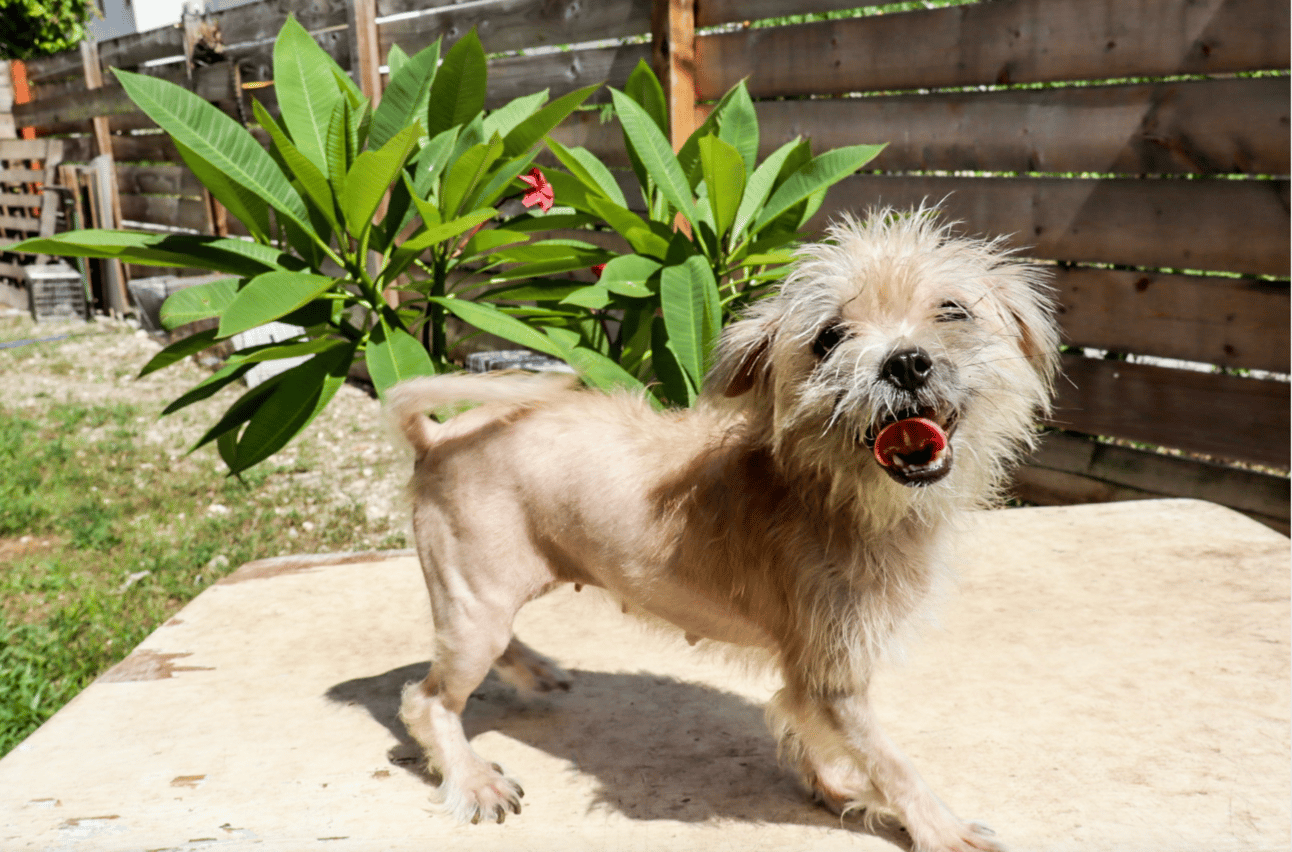
One of many backyard bred dogs rescued after neglect.
Boonie Tails
By Grace Keilbach, Aria Keilbach, and Shea Hartig
What is a Backyard Breeder?
When we say B.Y.B., don’t show up to Boonie Babies headquarters with your own beer. “Backyard Breeder” is an umbrella term used to describe amateur breeders who are more concerned about profit than animal welfare and breed standards. Due to their overall lack of care for the animals’ wellbeing and strong financial motives to continue breeding, backyard breeders (B.Y.B) are one of the top contributors to the shelter crisis everywhere. Those puppies may be cute, but their lives come at the cost of thousands of others. Whether you’re wanting to purchase a dog or just like to be informed, here are some common characteristics of B.Y.B. and why it’s so detrimental.
(To learn about ethical breeders, refer to our previous newsletter “Just Buy a Poodle.”
B.Y.B.
Despite the catchy term, backyard bred dogs don’t all come directly from a literal backyard (although plenty do). Backyard breeders often use the tactic of advertising good breeding and whelping conditions to trick buyers into believing they are not problematic. We hate to break it to you but no matter how clean the home may appear and how sweet Susan from facebook may be, any dog bought from an “accidental” litter (spoiler alert: there’s nothing accidental about not keeping intact dogs separated or neglecting to do a spay abortions) is a result of backyard breeding. As well as any dog bred and sold on Saipan, doodle, designer dog, or “extremely rare breed with champion bloodline” from craigslist, to name a few more B.Y.B. examples. You may be asking yourself, “whats so wrong buying from these breeders as long as the dog is taken care of?” and the answer is unfortunately, a LOT. When breeding for profit (cough cough how much was your doodle that is a mutt only created to take advantage of a fad), safe and ethical breeding practices are often ignored, foundation dogs come from poor stock, are not well bred, and uphold no standards leading to health problems, behavioral issues, and an increase in shelter intakes. Buying from these breeders only condones these practices and encourages them to continue.
Ethical breeders, who breed only to better their breed, are dedicated to their dogs throughout the animals’ entire lives. They therefore have contracts and precautions put in place to ensure none of their animals ever end up in a shelter, further contributing to euthanasia numbers. Backyard breeders, once again, are profit focused and uninterested in where their dogs end up after they are sold. They do not put any precautions in place and are one of the biggest contributors to the shelter overpopulation crisis in the U.S.. What happens to that doodle puppy who was purchased because of their “hypoallergenic” coat or that “Husky” who won’t stop eating the couch? When they begin to demonstrate health and behavioral issues due to unethical breeding practices, they end up at the shelter. These bred for profit dogs end up taking up space, resources, and costing lives, often even losing their own.
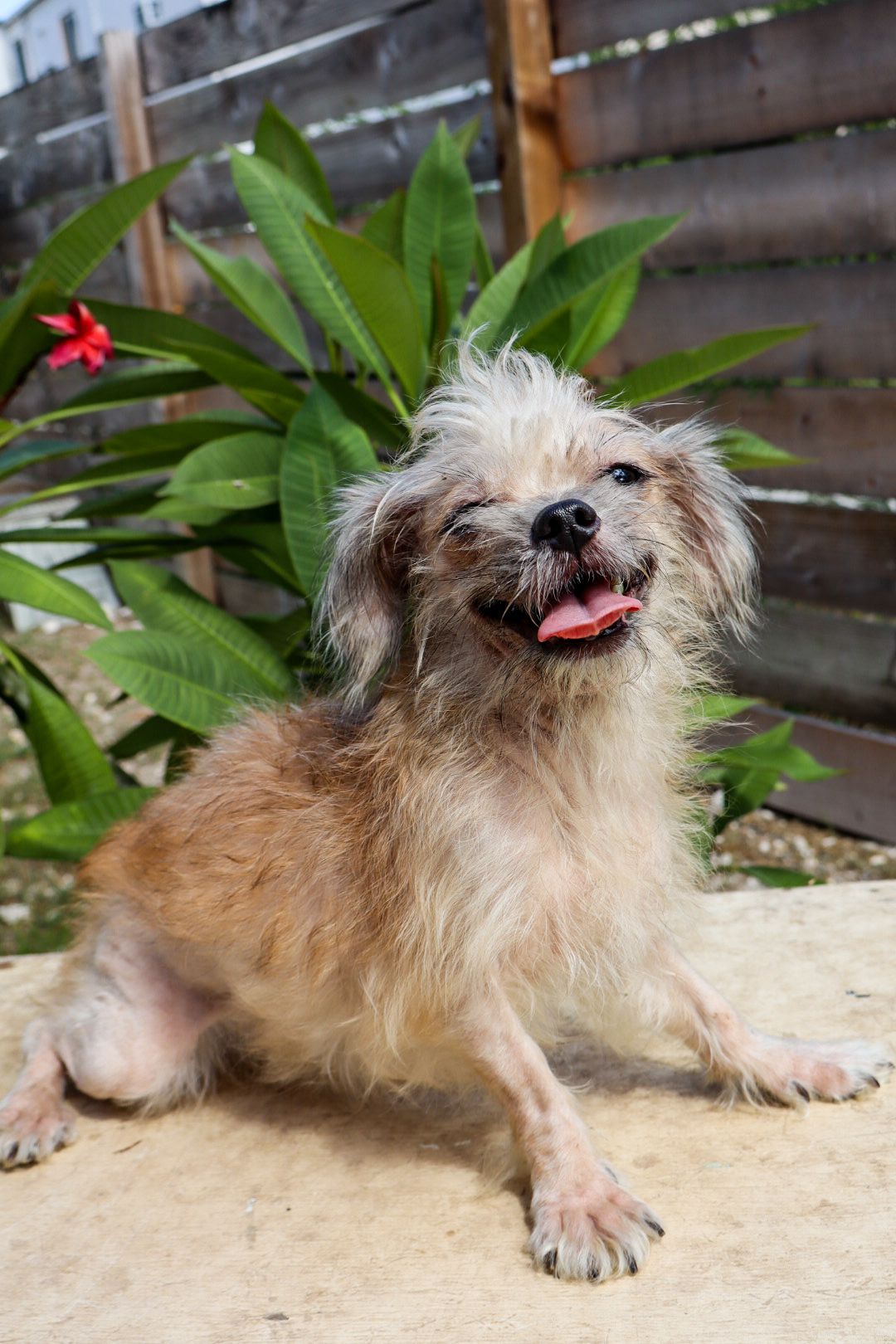
Another B.Y.B. dog who was rescued by Boonie Babies after neglect.
What B.Y.B. Looks Like on Saipan
You would think on an isolated island with no veterinarian and literally thousands of stray dogs just outside your door, no one would intentionally be breeding more dogs for fun, status, and profit. Sadly that’s not the case. Like everywhere else, backyard breeding runs rampant on Saipan, especially the breeding of “Maltese,” “pitbulls,” and “bullies.” If you’re wondering why I have quotation marks on these common breeds, it’s because they actually don’t exist on Saipan. At least not unless imported (which is rare due to it being costly and time consuming). Therefore the original animals that breeders use are not even purebred to begin with.
Additionally, the bred and sold dogs on Saipan are created exclusively for profit and not to fit breed standards. Quantity of puppies is prioritized far higher than the quality of genetics. Because of this, breeds are interbred to produce more puppies. This results in dogs that are marketed and sold as purebred “maltese”, “pitbulls”, and “bullies” but in reality they are mutts and a result of genetically unclear inbreeding. For example, the “purebred maltese” we currently have at Boonie Babies are mutts who’s parents were also siblings... They are actually a mix of maltese, shitzu, terrier, and poodle. These dogs were kept in one small cage for their entire lives with their grooming and psychological needs completely neglected causing hair loss and nails so overgrown they curled and punctured into their paw pads. Furthermore, as a result of their inbreeding when we rescued them we noticed misaligned jaws, deformed frames and an array of health and behavioral issues.
These breeding practices are unethical for a multitude of reasons. First, there is no vet on Saipan. It is unethical to create dogs and bring them into a world where they will not have access to healthcare. Particularly since these dogs are prone to health issues in the first place. Second, this island is already overcrowded with stray dogs and does not have the appropriate resources to reduce the stray population. Adding dogs to those numbers intentionally is extremely immoral especially when you consider that many sold dogs end up in the shelter anyway, utilizing limited resources intended for strays. Furthermore dogs such as “bullies” cannot be ethically created in an environment that simply does not support them. The anatomy of these “bullies” makes them sensitive to heat and humidity and leads them to struggle to breathe and be riddled with fungal skin issues. Their already dysfunctional breathing is exacerbated by the heat making them far more prone to heat stroke and constant discomfort. The small breed mixes are also not compatible with Saipan’s environment. Their long fur makes the heat unbearable and without a groomer on-island their coats are rarely taken care of properly. We see many of these small bred dogs with long, unkempt fur that causes thick, heavy matting. This matting can cut off circulation to the skin and cause severe infection. Just this week we rescued a “maltese” with such thick, painful matting across his entire body that he needed to be sedated in order to be shaved. Unfortunately we see no end in sight for Saipan B.Y.B until the stigma surrounding boonies and the idolization of purebred dogs changes. The irony being none of these dogs are actually purebred. They’re mutts, just like the boonies we love.
Although the trending Saipan backyard bred dogs are mostly “bullies”, “pittbulls”, and “maltese” be sure to watch out for the trending “purebreds” in your community. The most common B.Y.B dogs in the states currently are French bulldogs, German shepherds, labradoodles, cockapoos and any other doodle types. So be sure to do your research and ensure you are not contributing to these unethical practices.
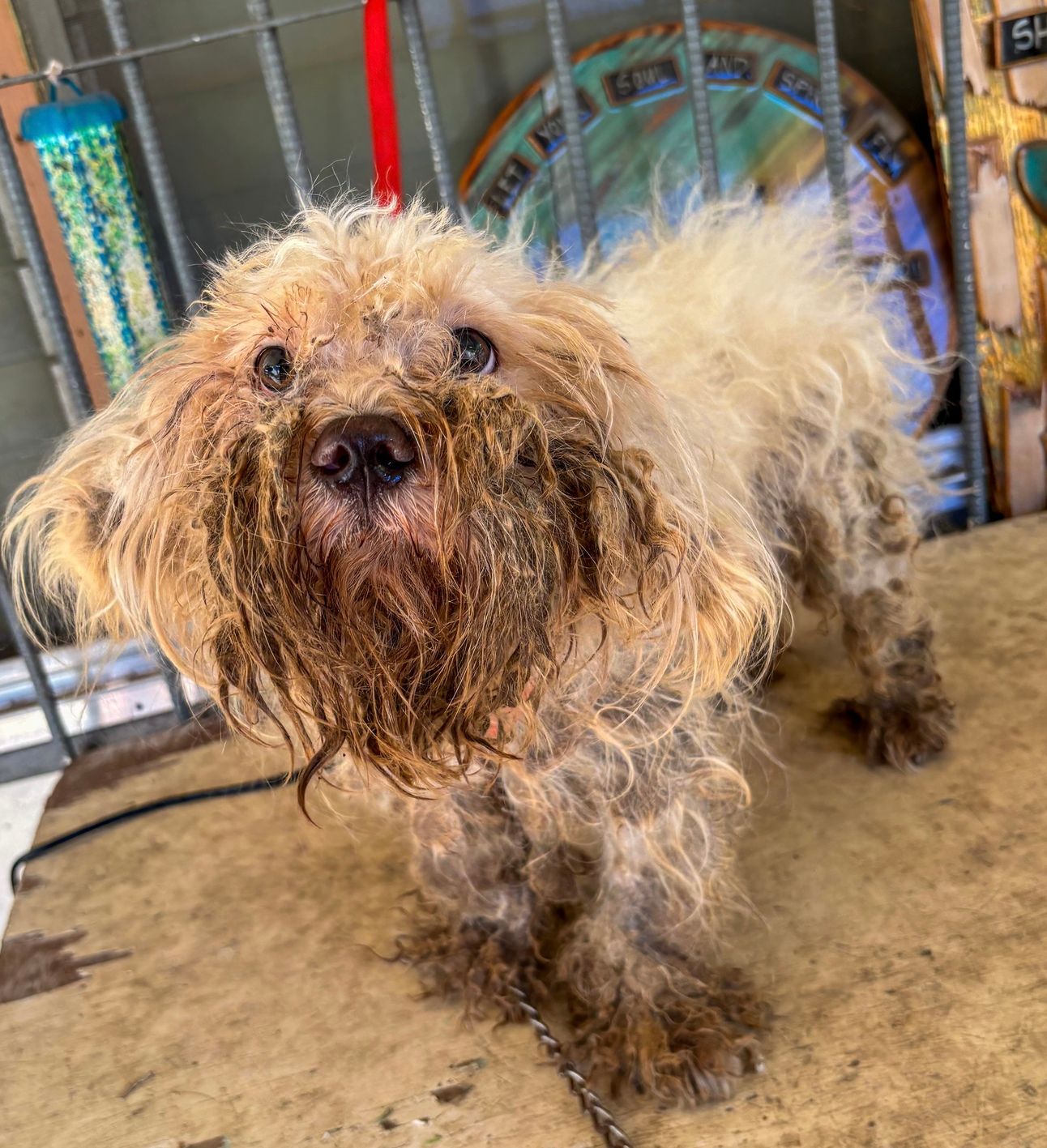
Fred, the severely matted “Maltese” we rescued earlier this week (he’s feeling much better now and lost a few pounds of hair).
Key Characteristics of B.Y.B.
Breeding for profit
Selling at an early age
No contract between you and the breeder as well as no guarantees
Lack of experience or knowledge
Breeding without proper and extensive health testing
Failure to assess and test temperament
Continuous, back to back litters
Where it gets tricky in distinguishing between ethical and backyard breeders is that anyone can can have a contract, health/temperament test, provide a clean environment, and google information, the question is, how well are they actually doing it and why. Backyard Breeders continue breeding solely to sell puppies whereas ethical breeders breed healthy, predictable, purebred dogs for a specific reason. If you are buying a dog, it should be after extensive research and for a specific reason.
Although we do support ethical breeders, we believe that everyone should give a shelter dog a chance, especially Boonies. One of the biggest arguments against adopting is that shelter dogs can be unpredictable. This may be true in some cases however, when adopting, you have the option of fostering and getting to know about the dog/cat, arguably giving you a much more predictable outcome than buying any puppy. Adopt or shop responsibly!
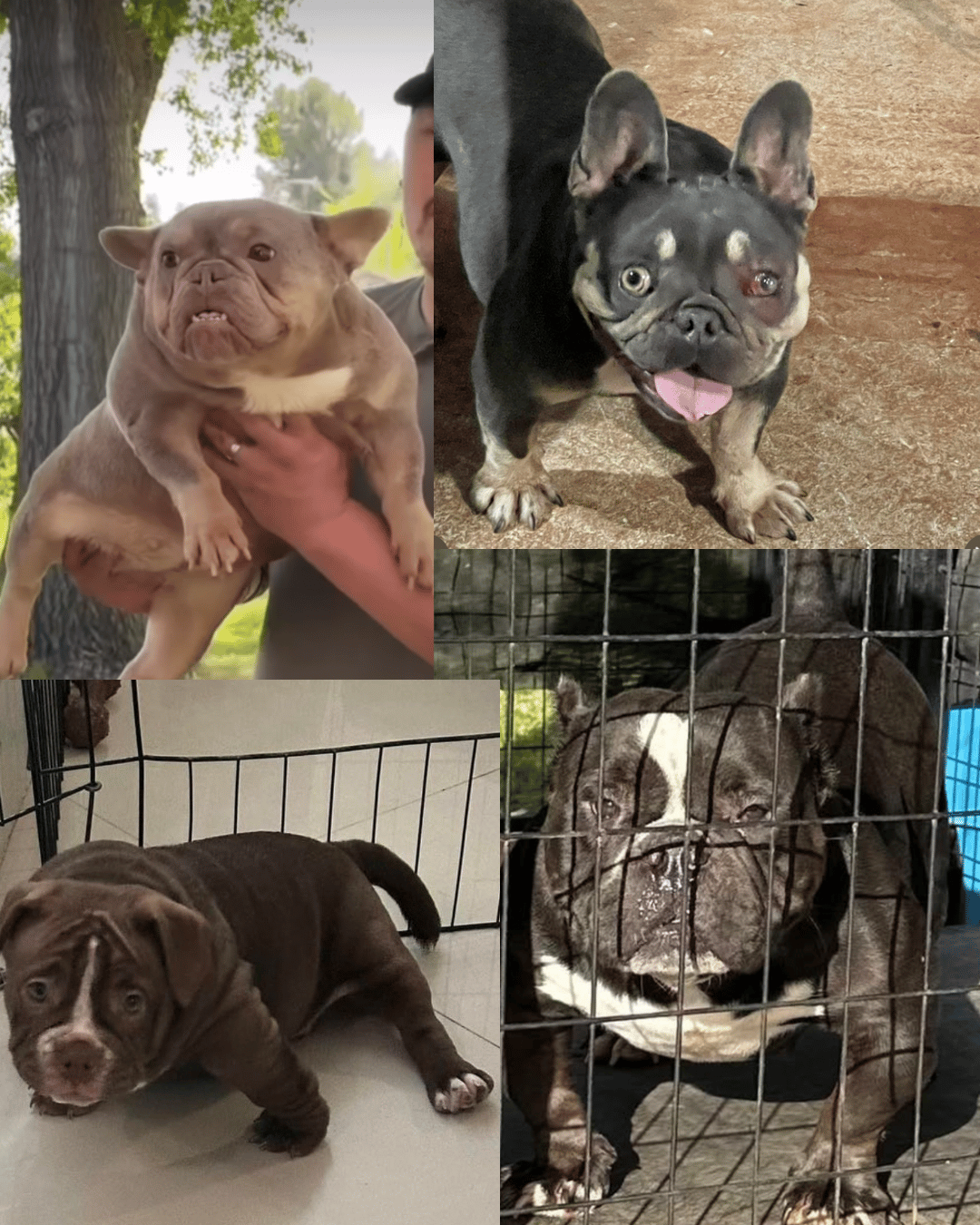
Obviously deformed dogs being advertised and sold right now by a B.Y.B. on Guam with over 4,000 followers.
Take the bite out of rising vet costs with pet insurance
Veterinarians across the country have reported pressure from corporate managers to prioritize profit. This incentivized higher patient turnover, increased testing, and upselling services. Pet insurance could help you offset some of these rising costs, with some providing up to 90% reimbursement.
Boonie of the Week: Meet WSFR!
Story submitted by Raena Celis
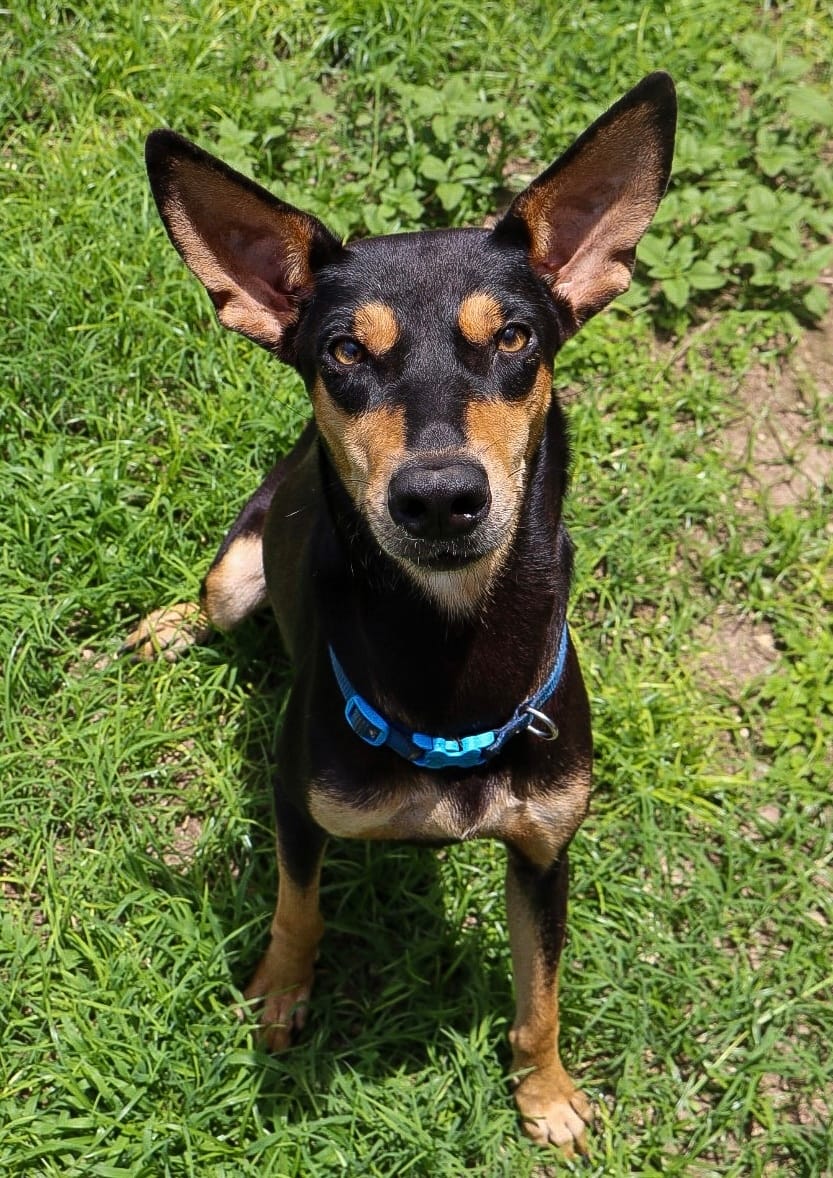
WSFR (pronounced “Wisfer”) was a stray who found her way to the Division of Fish and Wildlife, where she quickly became part of our daily lives. She never bothered anyone, just quietly watched people come and go, choosing her own space among the vehicles or the parking lot. At first she seemed terrified when approached. It didn't take too long for her to be comfortable enough to allow me to pet her, feed her by hand , and have her sit by my side. After getting her trust, I thought it was fitting for her to have a collar. I first got her a pink one, and after that went missing, I bought her a blue one. Over time, she warmed up to the staff, and we to her. She became our little companion, always offering comfort during breaks. I, as well as other staff, made sure she was fed every morning and afternoon, while the night shift staff ensured she had dinner. We even named her WSFR, after the Wildlife and Sport Fish Restoration program, which is a grant overseen by the very division she made her home.
Despite our best efforts, none of us could provide her with a permanent home due to various circumstances. When I left the division on April 4, I asked the staff to continue caring for her and looking for a safe place for her. A couple of weeks later, I received heartbreaking news that WSFR had been picked up by animal control. I hoped and prayed she would find safety.
Then I saw your Instagram story. I saw WSFR among the dogs, and I recognized her instantly from the blue collar. Your story shared that they had only one more day left, and my heart shattered. I rushed to the shelter, ready to plead for her life, only to learn that, just an hour before I arrived, you had rescued her. I cannot begin to express the overwhelming relief and gratitude I felt at that moment.
Aria was drawn to WSFR’s friendly and outgoing demeanor, randomly selecting her out of dozens of others set to be euthanized that day. This is truly one special, and lucky dog. To help cover the cost of WSFR’s care and others like her, please consider pledging your support and making a donation via the button below.
Boonie Tails is free to read. But if you liked this post, support Boonie Babies and this newsletter by pledging a monthly or annual donation. Thank you for reading and we’ll see you next week!


Reply